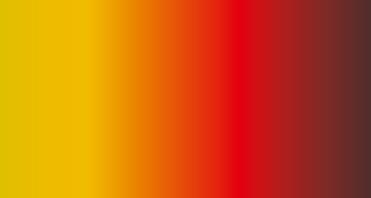




Better Health and a better way of life.








Better Health and a better way of life.


The medical aesthetics market comprises advanced
products and technologies used by skilled medical professionals or aesthetic specialists for improving the physical appearance of patients. Various invasive and non-invasive procedures are primarily designed for significant enhancements and cosmetic changes in a patient’s appearance, and these are collectively termed medical aesthetic procedures.
Currently, there is an increasing demand for cosmetic procedures among the millennials and younger generation, with the increasing influence of social media, resulting in promising and substantial growth in the medical aesthetics products market. The rise in the popularity of these procedures is also driving significant innovations in this area aimed at improving convenience for patients.


As medical aesthetics have become a part of regular treatments among individuals who want to enhance their appearance, it has become a growing trend across the globe. Due to rapid results, aesthetic clinical treatments are now gaining popularity.
Today, effective aesthetics medicine is a minimally invasive practice based on doctors having skilled hands, whereby
they are leveraging reliable, leading-edge technology, such as laser tech, chemical peels, fillers, and injectables of natural or bio-ingredients. It spans surface treatments through chemical peels and lasers to minimally invasive procedures, such as thread-lifts, botulinum type A injections, derma fillers, fat grafts, and hair transplants.

Aesthetic medicine bridges the gap between beauty and health. It is essential because beauty is not just skin deep. Beauty includes the need to feel good in one's skin, thereby nurturing a psychophysical balance. We cannot ignore the importance of aesthetics from a psycho-sociological point of view, especially when today's society so highly covets healthy as well as attractive appearances.
Focusing on the exponential industry sagacity of Medical Aesthetics , Insights Care’s latest edition, “10 Best Medical Aesthetic Companies to Watch,” sheds the limelight on the fundamentals of the leading companies in the niche showcasing their innovations. Flip through the pages and embrace the journey of these companies with the profound expertise that is enabling innovations in the sector. Don’t forget to read the two exclusive articles crafted by our inhouse editors!
Have a delightful read!
 - Anish Miller
- Anish Miller



















Alma Lasers almalasers.com
Lior
Alma lasers is a leading innovator of medical aesthe�c lasers & radiofrequency devices for surgical, medical and beauty providers.
Biopelle Inc. biopelle.com
Eric
Biopelle offers a full spectrum of clinically-proven skincare products addressing mul�ple concerns from post-procedure care to daily maintenance.
GC Aesthe�cs gcaesthe�cs.com
IRIDEX Corpora�on iridex.com
David
GC

goal is to empower and support individuals on their body transforma�on journey.
IRIDEX provides office-based laser solu�ons for your re�na prac�ce.
Radiant Healthcare radianthealth.co.za
Joshua
Aaron
CEO Sciton was founded to build excep�onal lasers and light sources to improve people's lives.
Radiant Healthcare delivers cost-efficient care though a proprietary custom cost model. Sciton sciton.com










Sternlaser sternlaser.co.za
Claudia
Sternlaser distributes and maintains the very latest in aesthe�c laser equipment.
Suneva Medical Inc. sunevamedical.com
Theraderm theraderm.net
Venus Concept venusconcept.com

Pat
Suneva Medical partners with aesthe�c providers to build prac�ces by providing unique products that build pa�ent sa�sfac�on and loyalty.
Theraderm features advanced formulas for trea�ng a wide range of skin condi�ons from aging to acne
As a trusted aesthe�c medical device company, Venus Concept's technology can help you grow your prac�ce with innova�on and exper�se.
Dayan CEO Fleming President Carlos Reis Pinto CEO Aesthe�cs' Bruce CEO Vazquez Co-founder Burton Scholtz PR & Mark Altavilla CEO Dr. James Beckman MD, Founder and CEO Melissa Kang, VPM and Soren M. Sinay, COO
We operate as a family and focus on taking care of our people, which is why we build the best quality medical and aesthetic devices on the planet.




 Aaron Burton CEO
Aaron Burton CEO
The world is changing. People and their preferences, lifestyle, perspectives, opinions, and beliefs are all changing at a pace where innovation is no more just a sporadic occurrence.
For any company, innovating with the motive of making lives better, earns it a distinction from the crowd. Striving to deliver this innovation speaks volumes about what a company prioritizes, winning customer trust.
A prime example of such companies—featured on the cover of this edition—is Sciton , a medical device company providing advanced laser and light sources to medical professionals worldwide with a focus on long-term results, making patients happy, and physicians successful.

Sciton was founded in 1997 by two laser physicists, Jim Hobart , Ph.D., and Dan Negus , Ph.D., who believed in building quality products based on science that improved people's lives. The foundation of Sciton's success, even 24years later, is still based on those beliefs.

"Our corporate mission is simple: 'To Improve People's Lives,' but the core value that drives our company culture is to 'Improve Our People Lives'," said Aaron Burton , Sciton's CEO .
The culture at Sciton is unlike any other company. It operates as a family and focuses on taking care of its people, which is why it builds the best quality medical and aesthetic devices on the planet.
"At Sciton, we genuinely believe that it is our responsibility to develop products that work, rather than introducing products that are just mediocre. We think our physician partners want products that have lasting power and won't be hype on day one but fizzle out on day two after bad reviews. The market is different now. Consumers are very educated and aware before they call a physician's office," Aaron added.
One of Sciton's recent product launches took place in 2020; during the pandemic, the company launched its newest platform system called the mJOULE. The mJOULE is a smaller version of the JouleX platform that offers the best of both worlds with Sciton's latest technologies, BBL HERO and MOXI.

These two treatments provide excellent results while also having little downtime or discomfort for the patient. Sciton is often referred to as the 'Bentley of Lasers.' For years, the Sciton team has heard that, but Dr. Grant Stevens, a wellknown and highly respected plastic surgeon, made it famous. "We're always flattered and know we've earned that reputation because of our quality products," Aaron expressed.
"If a physician or practice owns a Sciton, you know they believe in investing in the best products for their patients. Our systems aren't cheap. We know that, but we also know why. Our systems are designed to provide a lot of treatment options, not just one. They are hand-built, one at a time in Silicon Valley, by a fantastic manufacturing team so that they will last a long time. 90% of our systems ever built are still in the market today because of our craftsmanship and upgradeable platforms. Our new products, like BBL HERO, can be added to our older systems rather than forcing a physician to buy a new system. Our systems are not cheap, but they have the best ROI."
Aaron Burton, Sciton's CEO, has been with the company since 2011. His journey started in sales, working as an Area Sales Manager in Texas, before leading Sciton's Women's Health Group.
In 2018, Aaron became Sciton's first Chief Operating Officer. As part of Jim Hobart's strategy to see the company grow for another generation, he was appointed CEO in 2020.
Aaron immediately focused on the company's culture, protecting the family environment while furthering the company's growth mindset. His mantra is believing in the 'Power of Your Mindset' and is evident in everything that he touches.
We at Insights Care believe that perspectives and experience are aspects that help build the path towards success. To gain an entrepreneur's world view, we asked Aaron for his opinion and advice on a few things:
Opinion on the future of the medical devices sector considering the continuous development in technology:
"This industry is constantly changing and growing for the better for our providers and their patients." My prediction






At Sciton, we genuinely believe that it is our responsibility to develop products that work rather than introducing products that are just mediocre.




90% of our systems ever built are still in the market today because of our craftsmanship and upgradeable platforms.
and what we're seeing so far, is patients looking for options with lower downtime and treatments that can be done yearround. It is also important to focus on treatment options for all skin types that are safe, effective, and truly 'worth it' for the consumer," said Aaron.
Opinion on the impact of the COVID-19 pandemic on the medical devices vertical, and the challenges that Sciton faced during the initial phase of the pandemic:
"Of course, the start of the pandemic was scary for all businesses around the world. Closing manufacturing and our headquarters in Palo Alto, CA temporarily was tough. Like many other businesses, our team had to switch our thinking from strategic to tactical in the first few months.”
"As mentioned earlier, our mission is to Make People's Lives Better, and our mission was tested in 2020. Our number one goal was to maintain that core value as the company (and the world) faced such a stressful and unpredictable time. Thankfully now, the doors are back open and we're seeing treatment volume come back in bigger strides than ever.”
"Patients are excited about bettering themselves inside and out. They've been watching themselves on Zoom for over a year now and realizing what about their skin they want to change. Our customers are excited about our new technology, and we can be thankful that the aesthetics industry was so resilient and bounced back so quickly," he added.
Advice to the budding entrepreneurs and enthusiasts aspiring to venture into the medical device (laser tech) manufacturing industry:
"Focus on your people first. Your customers and investors are important, but if you don't have happy employees, who love coming to work, it's hard to make a great product that your customers want and grow like your investors want.”
® Sciton has continuously earned the 'Great Place to Work' recognition which is a tribute to the family culture that all the teams work hard to maintain. This April, Sciton also received the NewBeauty 2021 Innovation Award for its BBL HERO technology.
HALO Laser has won the New Beauty 2018 award, the 2016 RealSelf Most Worth it Award, and is the #1 'Worth It'
Facial Laser on Realself. HALO™ technology was also presented with the 2016 MyFaceMyBody Award for Best Anti-Aging Treatment.
Sciton's customer service has a long-standing history of amazing service that has been recognized throughout the industry. They were featured in the 2019 Aesthetic Industry Market Report, the 2012 Medical Spa MD and Physician Report and in 2011, Sciton was ranked First in Class among aesthetic laser manufacturers in a survey of Medical Spa MD's 5000-member physician community.

Sharing his vision of scaling Sciton's operations and offerings in the years to come, Aaron said, "We have a lot of growth opportunities, around the world. We put a big focus, for the first time this year, on growing our North American salesforce. We have almost doubled our team and believe we have a long way to go.”
"We also see some nice growth opportunities in our international business. We are going direct in more markets, including Australia and the UK just earlier this year. We launched mJOULE to some key markets such as the UK in June and just recently in Canada.”

"We operate worldwide with direct operations in the United States, Canada, Japan, Australia, United Kingdom, and distributor partners in more than 53 countries. 2021 is shaping up to be another record year, driven by demand around the world. Our new products are in demand, and we're excited about our R&D pipeline for 2023 and beyond. Our family, around the world, is doing some fantastic work right now, and I'm optimistic about our future." he concluded.
















Aesthetic medicine is the branch of dermatology that deals with altering cosmetic appearances through the treatment of skin conditions such as scars, wrinkles, skin laxity, moles, liver spots, excess fat, unwanted hair, skin discoloration and spider veins. Every board certified dermatologist takes minimum 3 years of specialized training on the structure and functions of the skin as it is a sensitive aspect. The practice is related to medical, surgical and cosmetic dermatology.


Aesthetic medicine provides assistance to patients seeking aesthetic beauty by backing the maintenance, modification, reshaping of bodily appearance or facial transformation for outer appearance. There are various branch of aesthetic medicine which originate from their parent discipline and share related aims and objectives. It includes aesthetic surgery, aesthetic dermatology, aesthetic dentistry, aesthetic traditional Chinese medicine, aesthetic healthcare technology, aesthetic clinical psychology, aesthetic medical techniques, etc. Aesthetic surgery also known as plastic surgery is originated from plastic, maxillofacial, eye, ear, nose and throat including microsurgery. Similarly, aesthetic dermatology is the treatment for the skin, hair or body of a patient that is meant to enhance their appearance. Aesthetic medicine sincerely focuses on repairing and beautification of body parts of a patient. The target audience is different who have different psychological state. The main aim of aesthetic medicine is to enhance the beauty of aesthetic seekers. Hence, it uses aesthetic techniques which apart from plastic surgery also include integration of clinical medicine and body aesthetics.
Some emerging trends of modern aesthetic medicine are nasal rejuvenation surgery; move over PRP, the rise of chin enhancement,


invasive brow lift, lipoabdominoplasty, pocket lift and many more. It is a misconception across the world that people of the entertainment world are the prime target audience who contribute the most to modern aesthetic medicine. However, there are many other who does the same.
Nasal rejuvenation surgery mainly includes two types of surgeries like thinning of nose skin and relaxing cartilage. Our skin thins over time and can cause bumps on the nose, a small twist or asymmetry on the tip of the nose, a ridge or depression. Sometimes the cartilage of the nose loses a bit of its structure which can cause the middle portion of the nose to look different. In such cases, plastic is used to repair the asymmetrical portions of the nose.
PRP is another modern treatment that stands for plateletrich-plasma (PRP). The procedure involves taking a blood sample from the patient’s arm or other non impulsive body part, and putting it into a centrifuge to isolate platelet-richplasma. This developed PRP is then implanted into the desired body part for aesthetic enhancement. It is typically injected into scalp for enriched hair growth, face for flawless skin and vagina or clitoris for improved sexual wellness.

Women around the world believe that a bit of increased chin projection can help balance the profile of celebrities. In addition to overall facial harmony, an uplifted chin makes our neck look longer and facial angle look better. Therefore, rising chin implant is applied on aesthetic chin enhancement seekers.
The invasive Brow lift (eyebrow lift) is a minimally invasive treatment the life the eyebrow to some level. This is most common among women who tend to look for intensified facial features. Gone are the days of cutting eyebrows from ear to ear to life the upper face. People nowadays are going for endoscopic brow lift treatment that achieves substantial and long-lasting brow elevation. It rejuvenates eye and forehead.
Traditional abdominoplasty also known as tummy tuck is a process for removing excess skin and tightening of abdominal muscles. But what if abdomen fat is the real concern? It is treated with lipoabdominoplasty which is a thinner version of the traditional one. This surgery primarily removes central fat around the waist in combination with any excess skin. It has the advantage of being able to remove all the fat unlike tummy tuck which focus on loose skin.
The Pocket Lift is a surgery that holds the breasts high, gives it support and withstands them from saggy look. Pocket life is best for those who do not want big breasts but just want to uplift them. During the treatment, no implant is needed. Instead, the breast tissue is tucked under pectoral fascia which upholds it and gives longer results.
Technological developments have led to the increase in the use of social media, especially after Covid-19 lockdown. Social media has become the go to aspect for all social groups these days. As it is a platform to share selfies and filtered photos, social media fuels people’s desire for makeover and transformation. People notice their outer appearances more which gradually escalates their wish to become more attractive. While expanding the branch of aesthetic medicine, scientists, aesthetic medical practitioners and dermatologists need to get inside the minds of consumers in advance. Being abreast of what research and revolutionary measures are taken in the field is the key. Certain amount of PR strategies too can help drive the market.
-Anish Miller


Remember healthcare B.C.? (Before Coronavirus, that is …)

For most people — patients and physicians alike — the pre-pandemic health care experience looked quite different. Few organizations had invested in digital transformation. Telemedicine was, in early 2020, still untethered from the realities of clinical practice, where fax machines and clipboards cluttered cubicles; the concept of "Zoom" is still a foreign practice.
The COVID-19 outbreak rearranged healthcare incentives for everyone dramatically, fueling the widespread adoption of digital tools and infrastructures, in exchange for safe, essential interactions — almost overnight.
Today, telemedicine is the new normal. Why schlep to the "waiting room" when you can chat with your doctor from the comfort of your couch? Self-quantification is relatively commonplace (Did you take your temperature today? How many times?); a well-stocked supply of at-home diagnostics is a badge of honor
(How many rapid tests do you have in your bathroom cabinet?). Major healthcare systems and governing bodies are reframing what it means to teach, provide, and receive medical care. The verb "zoom" has been added to the Lexicon.
Our relationship with technology and data, especially in healthcare, will only deepen, as we emerge from the other side of an unprecedented crisis. An "Internet of Medical Things" — with sensors, machine-learning, and real-time personalized insights for optimal health — is a world within reach. Indeed, the changes set in motion by the COVID-19 pandemic could finally accelerate the democratization of proactive, personalized, precision medicine, for every person, globally.
Imagine a spreadsheet that shows your bloodwork results over time. A well-trained physician can easily assess trends in your data; how certain biomarkers rise or fall in response to a new medication or supplement you are prescribed, for example. But what about patterns that may emerge from a spreadsheet that tracks hundreds, thousands, or millions of health datapoints?
With such a vast database, the subtle trends unique to your health portfolio can be impenetrable to even the most sophisticated physician's eye. These limitations do not exist with machine learning, however. Coupled with new access
to wearables and sensors that can track extensive datasets related to individual health (sleep, nutrition, exercise, mood, blood sugar, hormones, heart rate variability, microbiome, genetic and epigenetic markers, to name a few), artificial intelligence brings the possibility of revolutionized patient care; enabling physicians to precisely and instantaneously identify, and predict, each individual's health profile and trajectory, and effectively reverseengineering disease patterns through "hyper-personalized" interventions.
The very notion of an extensive, individualized health database counters the way conventional medicine has evolved. By looking at a limited set of biomarkers over a vast cohort — n=10,000,000, for example — conventional evidencebased medicine looks at obvious trends applicable to the average. In contrast, the precision medicine of the future that I see, will leverage technology and artificial intelligence to gather millions of data points on each person, revealing trends that — while obvious at the individual level when n=1 — get squeezed out of conventional practice, lost in the tails of the "normal" bell curve.

Consider Body Mass Index (BMI), as an example. You probably see the charts, which reference body weight relative to height, still hanging on your GP's door. Yet BMI is frequently meaningless. A petite, relatively thin-appearing person with 40% body fat, would have an excellent

BMI, while a muscular, larger-appearing person with 15% body fat, would classify as obese, with BMI as the metric.
Until recently, a health system built entirely on the individual has been implausible. In a world where most physicians have less than fifteen of facetime with a patient during an annual exam, and without machine learning, actionable " N-of-1 " medicine — at scale — has been a pipedream.
Precision Medicine comes close. Initially presented by former President Barack Obama at his State of the Union address in 2015 , the field of Precision Medicine has grown, especially in the field of oncology, where the discovery of genetic and epigenetic biomarkers has given rise to diagnostics and treatments that allow for early, proactive, and targeted disease treatment.
Closer yet, I'd argue, is the work I've begun in my own practice, where, for the past two decades, I have had to opportunity to explore such an approach more generally — that is, as it may benefit healthy individuals, as opposed to cancer patients.
Utilizing existing technology and robust patient records (thousands of biomarkers tracked systematically over years), we can create a clinical neural network on each person, and target precise actionable interventions to optimize each patient's health as they age — everything from supplements, sleep patterns, and workouts, to preferred carbohydrates (yes, some microbiome profiles metabolize white bread more efficiently than the "healthy" stuff), and even caffeine intake optimization (driven in part by genetic markers).

As the dataset grows, the technology removes all the background noise, targeting only the most relevant data points for each person. Even with access to technology, the approach is still labor intensive, and expensive.
The growth of machine learning into mainstream health systems will change this, however, enabling physicians to scale personalized health services while driving cost savings, proactively reversing patterns of chronic illnesses — diabetes or heart disease, stroke, osteoporosis, Alzheimer's, other forms of dementia, cancer, Parkinson's, neurodegenerative disorders, — that comprise the majority of our almost $4 trillion healthcare budget
Precise and measurable biomarker patterns that precede the onset of these disorders of aging exist, however. Machine learning, if we integrate it carefully, will give physicians the eagle-eye perspective, and time, to zero in on red flags in each person's data, and "treat" patients, before they are sick. Healthy longevity should not be a game of luck. Optimal health is something we can predict and control — not unlike personal wealth — but with significantly more predictability than the stock market; and accessibility that reaches far beyond Wall Street.
Healthcare A.C. (after coronavirus, that is) is still evolving, and I hope that we leverage the momentum of a newly accepting, tech-savvy, tele-friendly, health-conscious audience to transform our sick-care model into true health care, once and for all.
Dr Florence Comite is a leader in the fields of precision medicine, endocrinology, and anti-aging. Over the past two decades, she has established an international reputation for her nouveau-scientific approach to healthcare, which leverages omics data and technologies to create N-of-1Ô health care programs, designed to optimize healthy longevity. Headquartered in Manhattan, the Center for Precision Medicine and Health has additional N-of-1 labs in Palo Alto and Miami Beach. Dr Comite is scaling the data to Groq Health, a digital health platform for broader access.
Dr Comite completed her medical training and residency at the Yale School of Medicine. She was a fellow and associate at the National Institute of Child Health and Human Development at NIH, before joining the faculty at Yale, with a triple appointment in the Departments of Internal Medicine, Pediatrics, Obstetrics, Gynecology and Reproductive Sciences. Over the course of her 25-year tenure, she established Women's Health at Yale, and developed patented therapies for osteoporosis, endometriosis, fibroid disease, and infertility in women and men.
In addition to her scientific clinical publications, Dr Comite is a well-cited expert in national lay media, including the New York Times, TechCrunch, Entrepreneur, and WCBS 880. She is the author of the Amazon bestseller, Keep It Up: The Power of Precision Medicine.


Taking good care of your skin is essential for more than just your appearance, as it is necessary for your general health. It can help take care of you if you take care of it. This is why it is crucial to have a wellthought-out skincare routine. It is absolutely worth the time and energy to regularly take care of your skin.

Your skincare routine is only as good as the products you use. Quality assured products are safe and effective and may come in specific formulations for sensitive skin and other issues.
These products improve the texture and appearance of your skin and protect it from the adverse effects of the sun, pollutants, and problems that can negatively impact your health.
Choosing skincare essentials from a company like Therapon Skin Health with a reputable line of products can be helpful since each component may be designed to work in conjunction with the others. You can also be assured of the product quality and predict how your skin will react to trying a different product in the same line.
Under the coherent leadership of James Beckman , MD , Founder and CEO , Therapon Skin Health, the parent company of Theraderm products features products and procedures for a wide variety of skin conditions, including acne, ageing skin, redness, and pigmentation of the face and
body. Theraderm also features a professional line distributed exclusively to plastic surgeons, dermatologists, and skin health professionals.
In an interview with Insights Care , Dr Beckman sheds light on the commencement of Therapon Skin Health, emphasizing its quality enabled offerings and his opinions on the future of the company.
Please brief our audience about Therapon Skin Health. Kindly tell us the source of inspiration for starting a Medical Aesthetics company.
I began my medical career in 1977 after graduating from Arkansas' Medical School and completing a plastic surgery
Therapon products in the Theraderm brand enhance the quality of life through beautiful skin and a restored youthful appearance.
residency. I treated patients in my plastic surgery practice in Arkansas for over twenty years. At the time, I never envisioned starting a skincare company.
However, I wanted to provide my patients with the best skin care products and ingredients available to help their healing process, so I set out to develop products not available at the time that would improve their overall skin health and appearance.


Having majored in chemistry and from treating severely burned patients, I was inspired to create my full line of product solutions for restoring full function and mobility to skin-grafted hands. This led to the development of Beckman's Skin Care Cream, which would later become the foundation product for Therapon Skin Health.
The steps to restoring aging skin are to clean and gently remove damaged skin elements or cells, repair the skin, restore skin to its healthiest condition and protect skin from damage. In 1996, the Theraderm Skin Renewal system was developed, and we have continued to innovate and add breakthrough products ever since.
Tell us more about your products and service offerings and what aspects make them stand out in the industry.
What differentiates us is that all of our products are formulated by me as a plastic surgeon and chemistry major
to restore function to damaged skin. I have personally seen probably every kind of trauma and skin problem imaginable. We formulate products focused on improving skin problems.
We first look at what is the cause of the disease or problem; then, we look at what ingredients can possibly rectify or solve the problem. We uniquely combine different products with other products rather than make one mega product that claims to do everything.
This allows us to provide a very specific focus on getting the best result from the combination. This would be similar to preparing an excellent meal with 3-4 exceptional dishes that complement each of the others.
Please tell us about your journey and how you have helped with the development and enhancement of the outreach of your company.
Therapon products in the Theraderm brand enhance the quality of life through beautiful skin and a restored youthful appearance. We do this by controlling the factors that contribute to aging, such as damaged collagen structure, irregular pigment, and loss of elasticity.
Prevention of daily, cumulative, permanent damage to the skin from UV exposure combined with restoration of

damage already present is a key element in getting the exceptional results consistently seen.
The life/work goal of a plastic surgeon has always been to restore full function and appearance to patients after injury or damage from disease or trauma. Time teaches that the skin is not simply the "painted surface" of the body. Its fullthickness qualities are perhaps the most functional part of one's life and self-esteem.
Over years of treating severely burned patients, I realized my passion for developing a superior cream to restore mobility, suppleness, and softness to skin grafted hands –hands that could bend and grasp objects necessary for someone to have a better quality of life.
My college degree in chemistry and passion for knowing the details of skin anatomy, physiology, and function, and numerous hours of research in the library led me to laboratory formulations and clinical testing. The goal was to find the "ultimate skin restoration cream."


Several years later, five women who all had excellent results in eliminating sagging skin from facelifts asked a familiar question within the same week: "What can erase fine lines, wrinkles, and make skin pigment even after a facelift removes sagging?" In the quest for a product that would correct these issues, I discovered a unique secret ingredient that not only enhanced moisturizer penetration but also had the side effect of erasing fine wrinkles and restoring youthful colouration to ageing facial skin!

I can remember the spring day in 1988 when the clear vision came. The vision was to create a simplified daily skincare system of products that would restore and rejuvenate ageing facial skin to a beautiful, younger look, as well as make skin soft and pliable again. Each component of the system would have a special role in the system and yet be a fully "stand-alone" product.
The result was the Theraderm Skin Health System that restores sun-damaged or aged skin and produces youthful, natural beauty.

Taking only minutes per day, women (or men) of any age or ethnicity and skin type could now incorporate products into their beauty routine specifically focused on skin health. Other plastic surgeons heard about the products, so I began to provide these incredible new products to their patients. It was a natural progression to start a company to make sure it could reach the masses.
Tell us about your bestselling skincare products and procedures.

One of our most unique products is Cool Skin, which stops the progression of a burn in its tracks, preventing skin damage from occurring. I began my career treating burns and developed this product to help burn victims recover, as there was nothing similar on the market. This solution uses Lactic Acid to stop intracellular damage from burning energy instantly.
Burns are caused by energy changes to the skin which can be caused by significant hot or cold temperature (dry ice, frostbite) changes, or even chemical burns. The burn effects are due to sudden severe temperature changes in relation to skin cell temperatures.
Cool Skin rapidly begins to reverse and repair any energycaused burns after they happen, preventing permanent skin damage. The product works on every energy injury type from sunburn, radiation therapy skin burns, and thermal/heat burns from touching hot pans, grease splashes and curling irons.
When used within four to six hours after sun exposure, this patent-pending formula stops the injury process before symptoms like pain, blistering, and redness fully develop.
Our patented Eternox® Peptide Crème has proven itself clinically to have exceptional anti-ageing action and has been recognized by various awards. Backed by 31 patents, Eternox helps reduce the appearance of lines and wrinkles, increase skin smoothness, and extend the long-term results of clinical injectables. The key ingredient is Soluble Keratin Peptides, active molecules that cause rapid rebuilding of the collagen matrix.
These structural proteins restore sun-damaged skin to its natural thickness and strength that prevents laxity and wrinkles. Available only in Theraderm skin care products, they are proven to eliminate of up to 40 per cent of laxity in the skin.
The result is a markedly diminished number of skin wrinkles. Our testing showed these unique peptides to be the ultimate natural, active ingredient to restore damaged skin to a youthful look.
In your opinion, what could be the future of the medical aesthetics industry post-pandemic? And how are you strategizing your company's operations for that future?
As proven years ago, during the great depression, when both money and goods were scarce, women continued to spend money on skincare products. Little expense could make their skin appearance look pretty and youthful! Our plan is to continue providing exceptional skincare products that are proven to diminish aging appearance while restoring both youthful texture and coloration to skin.
As an established leader, what would be your advice to the budding entrepreneurs and enthusiasts aspiring to venture into the medical aesthetics industry?
My father instilled many business principles in me as I grew up. He died suddenly in the summer after my first year in medical school, leaving behind a business with 56 employees that I needed to manage for a year and a mother and six sisters to care for, so I took a year off from med school.
I luckily had good advisors as I ran the company and quickly learned about all aspects of business, which helped prepare me for running my future practice and business. My advice would be to stop waiting. I encourage every person of any age or station in life to wake up every morning and think about who and what they could do to effect change in their own lives and others' lives.
How do you envision scaling your company's services in 2023 and beyond?
My major in college was chemistry. This allows me to originate essential aspects of our product formulations to get properties that direct skin condition characteristics and desired actions.
Each of our products is made using our own proprietary formulations. We choose specific containers and contract manufacturers for the custom production of our products to our specifications. Our manufacturing partners can scale up production to extremely large quantities if given a week or two lead times.
























Humanity has seen the evolution of technology in




numerous ways that has impacted almost everything from our classrooms to courtrooms, in-hand media like mobile phones to machines that count our heart beats. Out of all the profited sectors from technological advancements, health care is paramount, because, as it is said, health is wealth. Patients should be familiarized with the use of technology in various treatments. It keeps them aware of whether doctors are treating them correctly and necessary medications that are required.
The future of health care industry is taking a massive change with adoption of technological advancements such as artificial intelligence, virtual reality (VR)/Augmented Reality (AR), 3-D printing and nanotechnology. 3-D printing in medical field is a technology that creates implants or even joints for surgery. It is prevalent in prosthetics that creates limbs that matches patient’s original ones. It is basically creation of artificial organs that are operational like the original ones. 3-D printing technology provides artificial body parts to the patients who have lost some or the other body part in any kind of accident or mishap. It enables ease of mobility to the patient and his immune system does not get affected. The use of virtual reality (VR) has increased in recent years mainly for entertainment purposes. VR can be effectively













































































































used in health care industry for medical students to have “real life” experiences in procedures and operating patients. Its use can also be promoted in medical institutes to learn human anatomy.
To begin with, Information Technology (IT) enables doctors and other health practitioners to store, retrieve and keep accurate medical record of the patient. The use of medical tools helps ensure patient safety. It gives alerts on medication, red flags if health seems to deteriorate, consultation and diagnosis reports, for example, wearable like Fitbit and smart watches. Smart watches are revolutionizing health care industry into an entirely new way. It allows us to take care of our physical and mental health right from our wrist. It keeps us on alert mode and makes us aware about our heart rate, water intake, timely physical exercise, oxygen levels and sleep schedules. They also have the potential to detect chronic diseases such as heart attack and they have proved to be evident in saving lives. Research shows that these wearable devices are capable of detecting certain heart diseases like arterial fibrillation (A-fib), and high cost devices like some company’s smart watches can also detect common cold through diagnostic data and electrocardiograms (ECG) in smart watch. More recent advancement in smart watches has become a boon to women’s health. It shows pregnancy report even before clinical test and keeps a track of their menstrual cycle.
The future of health care is dependent on working hand-inhand with technology. It is important to know that health care workers will have to embrace emerging health care technologies in order to stay relevant in the coming years. Since technological advancements, it has now become easier and faster for patients to procure medical services just outside of the four walls of traditional medical system. Apart from artificial intelligence (AI), machine learning and robotics is being developed in medical sector to replace humans in the performance of routine unskilled tasks that are needed by medical practitioners. Sure we need to set some limit to the use of robots in health care industry, but these robots will provide more time to medical professionals to treat more patients in lesser time.
Co-operation between people and technology can result in positive achievements beneficial for our health care. Technology has evolved as a blessing in the treatment of cancer in last few years. Some latest targeted therapies in cancer include intensity modulated radiation therapy (IMRT), image guided radiation therapy (IGRT) and chemotherapy which mainly includes the used of machines
to detect cancer cells and target them through radiations. Computer programming is used to improve cancer diagnosis, drug development and precision medicine. Similarly, emerging technologies can win battles for us against life-threatening diseases like AIDS, Ebola and chronic respiratory diseases.

Telehealth is another advancement that has helped medical practitioners to reach out to their patients during the Corona pandemic. This technology helps doctors to send and receive their patients’ reports remotely through distant communication. Today, quite a number of hospitals and health care institutions are maximizing the use of telehealth for remote health monitoring, video visits and in-home chemotherapy. It also helps access clinical trials and cancer care easier for diverse group of patients across wider geographical area.
Cyro-EM is another breakthrough in medical technology that captures images of molecules that are ten thousand times the width of a human hair, at resolutions so high that they were unheard a decade ago. Cyro-EM stands for cyroelectron microscopy that generates high resolution images of how molecules behave and helps in the treatment of cancer until now. Similar to sorting through multiple candid photos to post a good one on social media, this technology enables scientists to analyze hundreds of thousands of cryoEM images for good quality, reconstructing 3-D images of molecules.










































